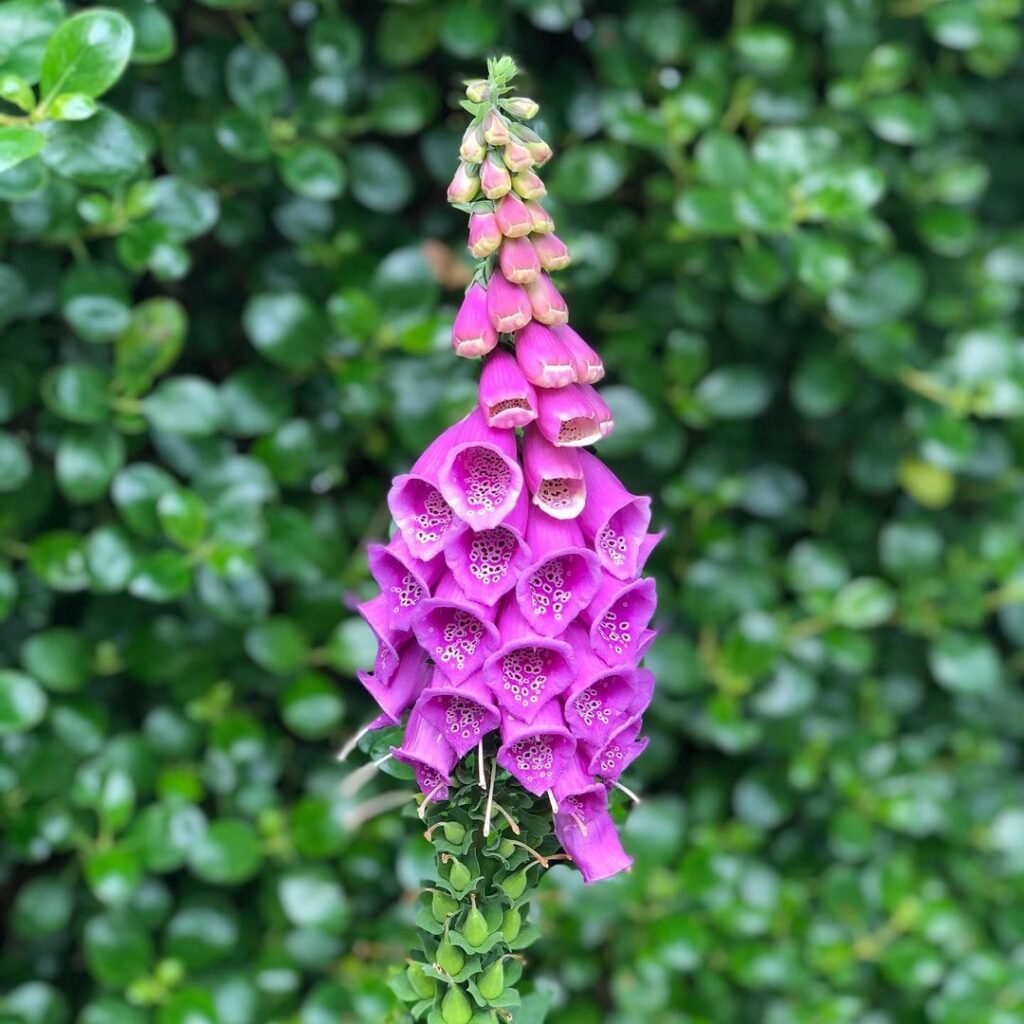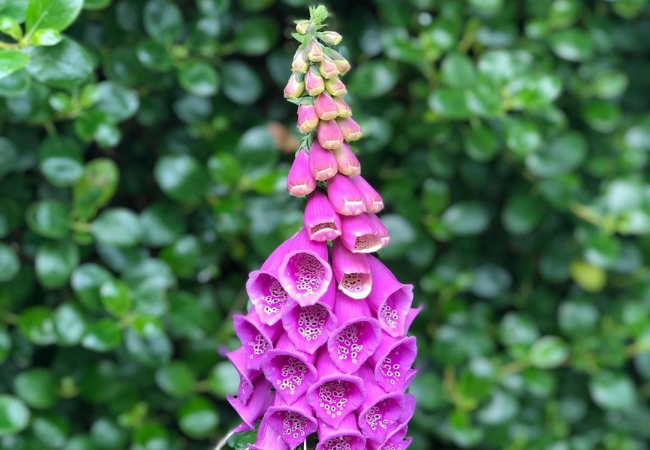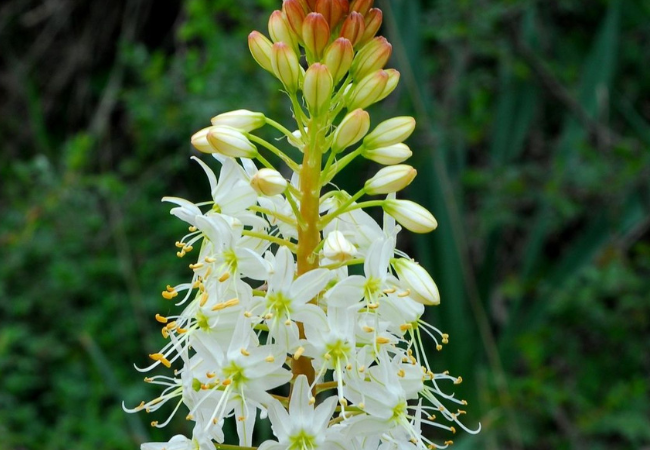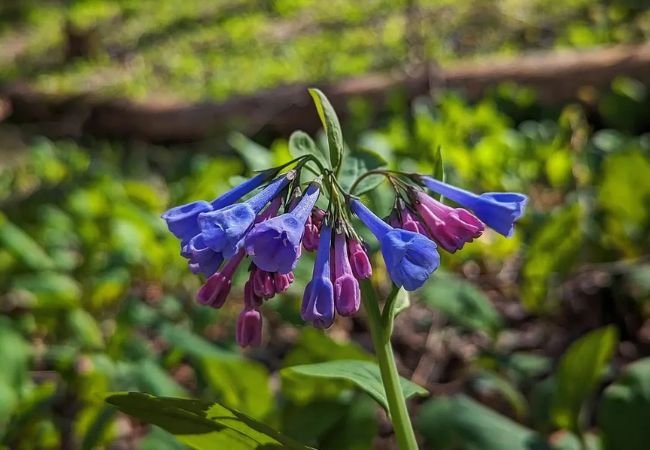Explore the captivating world of Foxglove Flowers. Learn about their varieties, care tips and fascinating history. Ideal for gardeners and nature enthusiasts seeking a touch of woodland magic.
Foxglove flowers, with their tall spikes of bell-shaped blooms, bring a touch of woodland magic to any garden. These striking plants have captivated gardeners for centuries with their beauty and intriguing history. In this article, we’ll delve into the world of foxgloves, exploring their care, varieties and unique characteristics.
Here’s an information chart for Foxglove:
| Category | Information |
|---|---|
| Botanical Name | Digitalis purpurea |
| Common Name | Foxglove |
| Plant Type | Biennial or short-lived perennial |
| Hardiness Zone | Zones 4-8 |
| Sun Exposure | Part shade to full shade |
| Soil Type | Moist, well-draining, acidic |
| Watering | Moderate |
| Growth Habit | Upright, clumping |
| Height/Spread | 3-5 feet tall, 1-2 feet wide |
| Special Features | Tall spikes of tubular flowers in various colors, attracts hummingbirds and bees, deer resistant |
What are Foxglove Flowers?

Foxgloves, scientifically known as Digitalis, are biennial or short-lived perennial plants known for their tall flower spikes. The tubular flowers come in shades of purple, pink, white and yellow, often with speckled throats.
Common types of foxgloves include
- Common Foxglove (Digitalis purpurea)
- Woolly Foxglove (Digitalis lanata)
- Rusty Foxglove (Digitalis ferruginea)
The United States Department of Agriculture provides detailed information about the Digitalis genus.
Growing Foxglove Flowers
Foxgloves are relatively easy to grow, but they have specific needs:
- Sunlight: They prefer partial shade but can tolerate full sun in cooler climates.
- Soil: Well-draining, slightly acidic soil is best.
- Planting: Sow seeds in late spring or summer for blooms the following year.
- Water: Keep soil consistently moist but not waterlogged.
- Spacing: Plant foxgloves about 2 feet apart to allow for good air circulation.
The Royal Horticultural Society offers comprehensive growing advice for foxglove plants.
Caring for Foxglove Flowers
To keep your foxgloves healthy and blooming:
- Deadhead spent flowers to encourage more blooms and prevent self-seeding.
- Stake tall varieties to prevent wind damage.
- Cut back the flowering stalk after blooming to encourage a second flush of flowers.
- In colder regions, mulch around the plants in winter for protection.
The University of Minnesota Extension provides detailed care instructions for foxgloves.
Importance and Uses of Foxglove
Foxgloves are more than just pretty flowers:
- Medicinal Use: Foxgloves are the source of the heart medication digoxin. However, all parts of the plant are highly toxic if ingested, so they should be handled with care. The National Center for Complementary and Integrative Health provides information on foxglove’s medicinal uses and risks.
- Wildlife Friendly: They attract bees, hummingbirds and other pollinators. The U.S. Forest Service offers information on pollinator-friendly gardening.
- Ornamental Value: Foxgloves add vertical interest and a cottage garden feel to landscapes.
- Cut Flowers: They make stunning additions to floral arrangements.
Historical and Cultural Significance
Foxgloves have a rich history and cultural significance:
- The name “foxglove” is thought to come from the old English “foxes glofa” (the glove of the fox).
- In folklore, foxgloves were said to be favorite haunts of fairies.
- They’ve been featured in many works of literature and art throughout history.
- Despite their toxicity, foxgloves have been used in traditional medicine for centuries.
The Smithsonian Gardens often provides interesting insights into the cultural significance of various plants.
Interesting Facts About Foxgloves
Did you know?
- Foxgloves are biennial, meaning they typically flower in their second year of growth.
- The scientific name Digitalis comes from the Latin word for finger, due to the flowers’ shape.
- Foxgloves can produce up to 2 million seeds per plant.
- These plants are deer-resistant due to their toxicity.
The United States National Arboretum features various plant collections that may include foxgloves.
Safety Considerations
It’s crucial to note that all parts of the foxglove plant are toxic if ingested. Always wear gloves when handling foxgloves and keep them away from children and pets. The National Capital Poison Center provides information on plant safety and what to do in case of accidental ingestion.
Foxgloves are enchanting plants that bring beauty, height and a touch of mystery to gardens. While they require some care in handling due to their toxicity, their stunning blooms and benefits for wildlife make them a worthwhile addition to many landscapes. Whether you’re creating a cottage garden, a woodland setting, or simply looking for a striking focal point, foxgloves are an excellent choice.
For more information on growing foxgloves and other garden plants, visit the United States Botanic Garden website.
Remember, while foxgloves are generally adaptable, it’s always best to consider your specific climate and garden conditions. Don’t hesitate to consult local gardening experts or botanical gardens for advice tailored to your area. Happy gardening and enjoy the magical presence of foxgloves in your garden!
For more gardening tips and plant care guides, visit usagardenhub.com.






